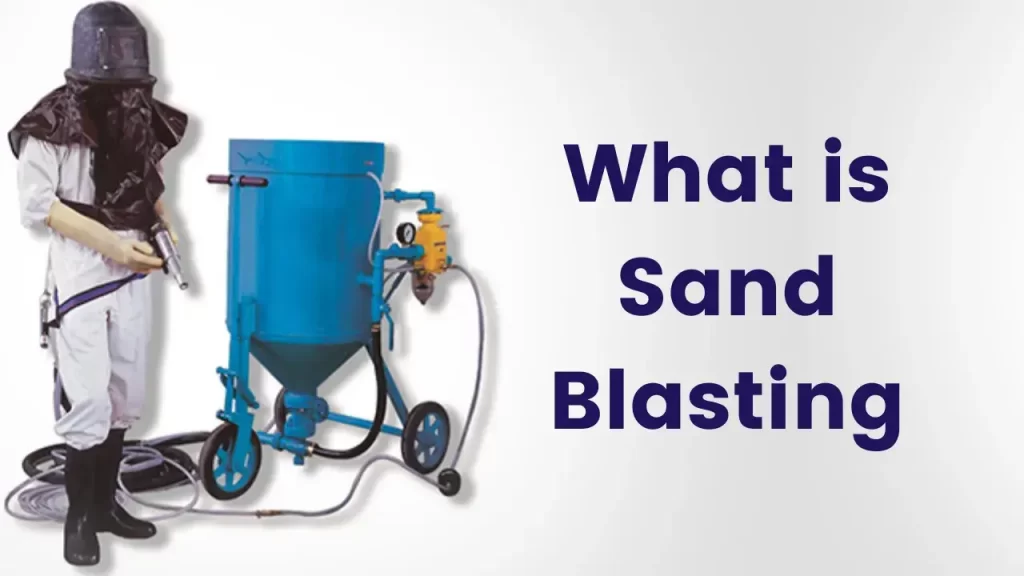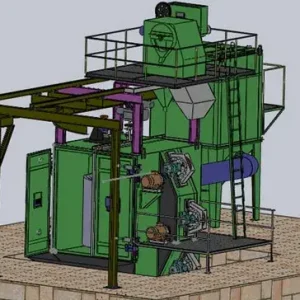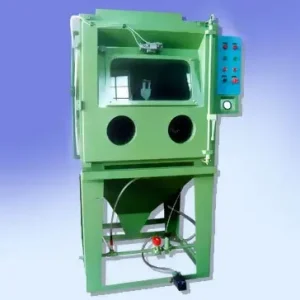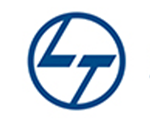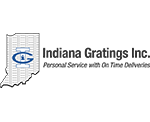Sandblasting is the act of propelling very fine particles of an abrasive material at high velocity toward a surface in order to clean or etch it.
Sandblasting is often used as a way to prepare a surface prior to painting. It is commonly used to strip paint from machinery and metal, but it has many other uses as well.
Also known as abrasive blasting, sandblasting is a surface finishing process that involves the use of a powered machine — typically an air compressor as well as a sandblasting machine — to spray abrasive particles under high pressure against a surface. It’s called “sandblasting” because it blasts the surface with particles of sand. As the sand particles strike the surface, they create a smoother and more even texture.
In this post, you’ll learn more about this surface finishing process and how it’s performed.
How is Sandblasting Performed?
The first step to performing sandblasting is pouring the sand into the sandblasting machine. Sandblasting machines have a chamber on top in which the sand is poured. The sandblasting machine is then connected to a conventional air compressor that, when activated, propels the sand out through a handheld nozzle.
The sand is then “blasted” across the surface, and because of its abrasive properties, the sand is able to create a smoother surface. Concrete, for example, is often sandblasted. After the concrete has been poured and allowed to dry, it’s treated with sandblasting. The process removes some of the excess material on the concrete, which in turn makes it smoother.
The sandblasting process knocks loose any paint, coating, or debris so that the surface can be washed clean with ease, resulting in an extremely smooth surface.
A sandblasting setup usually consists of three components:
- Abrasive
- Air compressor
- Blaster nozzle
The sand was once the most commonly used material in this technique. However, other materials are now commonly used in its place, such as:
- Steel grit
- Copper slag
- Walnut shells
- Powdered abrasives
- Coconut shell
There are two different processes for sandblasting:
- Air-driven – Best suited for metal surfaces, to avoid water intrusion into the surface or prevent moisture buildup
- Water-driven – Cools the surface to which it is applied, further reducing surface deterioration, most commonly used for brick and concrete surfaces
Proper safety gear should be used during the sandblasting process. The abrasive particles can irritate the eyes and skin, and if inhaled, can cause silicosis.
Sandblasting Advantages
Sandblasting is often used as a part of the finishing process, removing materials from the object to prepare its surface for coating.
But what are the benefits of sandblasting certain objects or products before putting on the finishing with powder coating? Here are some advantages of using sandblasting services for your business.
Breathe New Life into Surfaces with AeroWheel Surface Finishing: Your Partner in Perfection
How to Troubleshoot Common Issues with Shot Blasting Machines
Read More: Shot Blasting Machine Manufacturers in India
- Sandblasting Cleans The Surface:
One of the reasons why sandblasting is an important part of the finishing process isn’t just because it smooths the surface of the object. It cleans the surface too. Sandblasting services are a great way to remove rust, oil, and harmful contaminants from almost any kind of surface.
- Sandblasting Is Surprisingly Fast:
Sandblasting cleans and smooths objects for quick and efficient finishing. This makes cleaning tough surfaces like metal easier, which saves on time and money.
- Sandblasting services remove old paint:
When an object has old paint covering it, sandblasting can quickly remove the paint at a high speed. This makes the object ready for a new coating of paint.
Different Types Of Sandblasting
Sandblasting is a colloquial term that refers mainly to abrasive blasting. It is a process that uses a particular type of material for a particular abrasive result. A smooth material like corn cobs or walnut peels is meant for softer compression results and a soft layer like wooden structures and a thin metal surface.
Here in this blog, we have some different types of sand-blasting methods which are listed below:
- Silica Sand
Silica sand is also called silicon dioxide, which is ordinary sand that is commonly used for shearing or scraping a surface. It is called silica or quartz, which is commonly used to remove surface impurities and give it a clean look because it consists of sharp edges that give it a grit effect in abrasive blasting.
- Soda Sandblasting
Soda sandblasting gives a clean and effective result without damaging the layer because it does not damage the outer layer of softer metals like aluminous or react chemically with its surface. Therefore, it is extensively used to remove rust from metals.
- Steel Sandblasting
The steel method is utilized for both blasting and scraping. In this process, steel grit is utilized as an abrasive cutting media to clean off corrosion and rust from the hard metal surfaces. It has a fast cutting effect which can be efficient for the thick surface.
- Glass Beads
Glass beads are silica-free and environmentally safe. They can be used in many areas to remove surface imperfections like rust, burrs, scales, and more.

